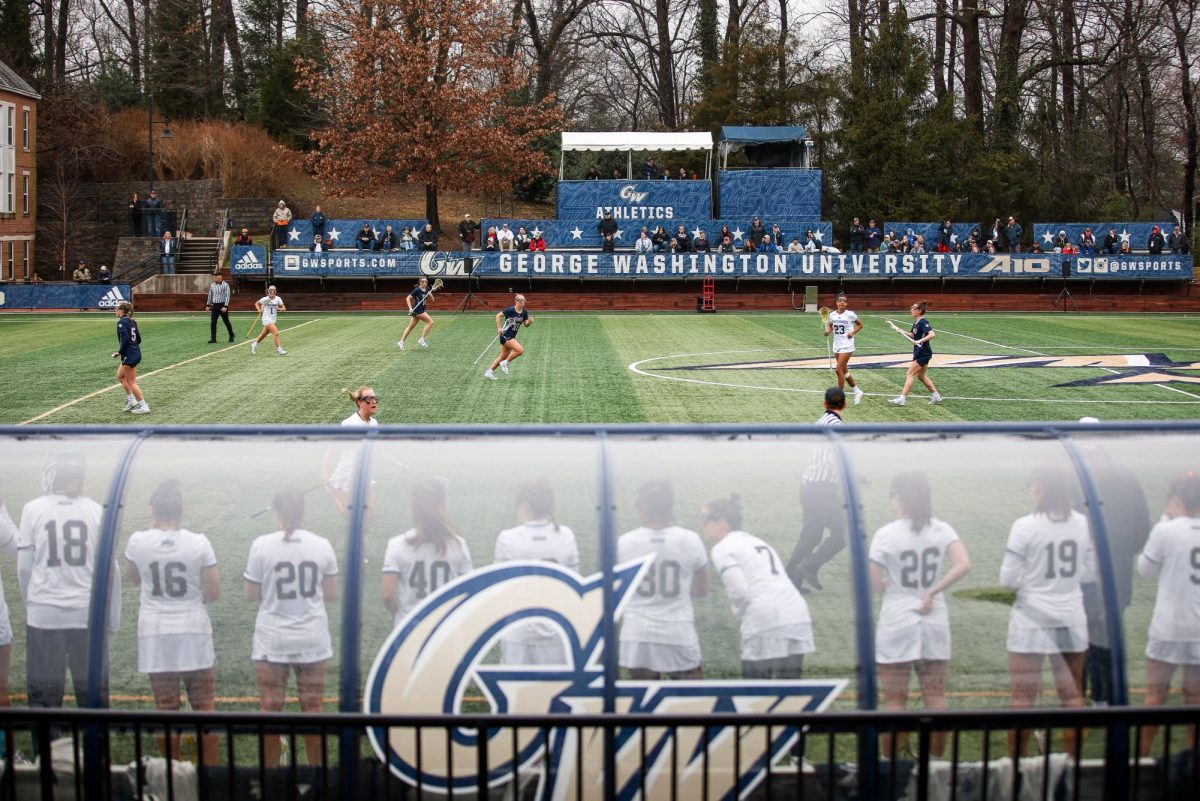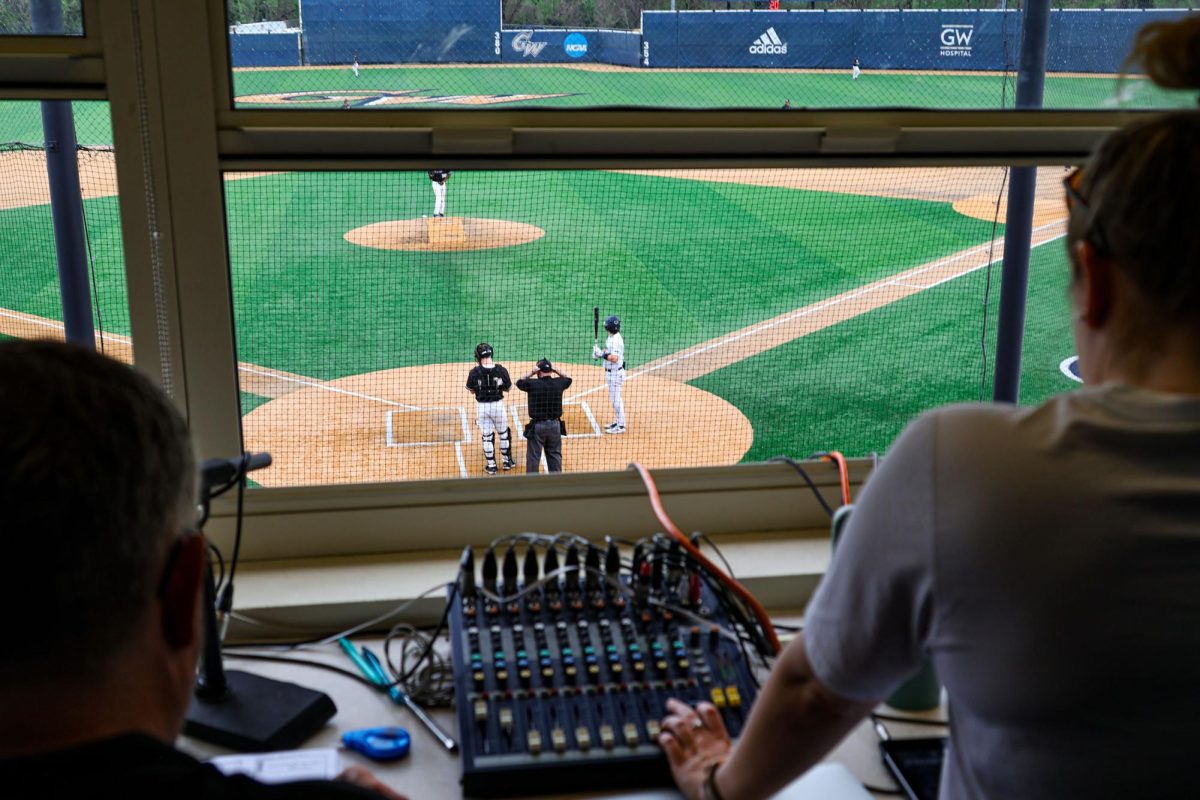There are few feelings that compare to the excitement of home field advantage. The familiar surroundings. A vocal crowd cheering. Knowing you have an inherent edge over the competition. But many GW athletes never really experience this thrill because the school’s urban campus doesn’t allow for many home fields.
GW’s location is one of the University’s major attractions, but it can be very inconvenient for athletic teams. High costs and limited space within city boundaries have forced teams such as cross country, golf and baseball to practice and play at various off-campus establishments.
The golf team practices at the East Potomac Ridge and Hains Point golf courses on Mondays and Wednesdays, and players report that travel time consumes approximately 45 minutes each way by van. Tuesday and Thursday practices take place at a local driving range five away, depending on traffic.
“It would definitely be more convenient to be able to walk a few blocks to practice,” sophomore golfer Andrew Gallo said. “It would give us more time to practice because we wouldn’t be wasting it traveling back and forth.”
Without a home course, the Colonials must host their own invitational in Rehoboth Beach, Del., some 120 miles away. This makes it difficult for the golfers to establish a fan base at GW.
“It is hard for us to get fans to our competitions because all of our tournaments are outside of D.C.,” sophomore golfer Dan Mirabella said. “We usually only have some family attend tournaments, so at least we get some support.”
Even without a bevy of spectators, Mirabella said the team doesn’t let attendance numbers affect its morale.
“We grew up playing golf without a lot of spectators. It would be nice to have a bunch of people following, but we don’t expect it, so it doesn’t affect our spirit or motivation,” he said.
The GW baseball team faces similar challenges regarding location because players have to take a van to Arlington, Va., to play at Barcroft Park. This season is the 10th year that GW has used Barcroft as its home field, the 1,000-seat stadium is rarely substantially filled. This is partly due to poor field conditions that allow something as minor as light rainfall to cancel practice and games.
Although it is usually only a 10-minute trip to the park, traffic and other delays can also subtract from the team’s practice time, and many GW supporters without private transportation cannot attend games.
“More fans would come to watch us play if we were on campus,” junior catcher Joe Michalski said. “Right now it’s mostly just the players’ friends and families who attend games.”
The lack of a true home field also poses a challenge in recruiting, but athletes said they are not concerned about the quality of players that GW attracts.
“Our coaches do a good job of getting guys that can play. If we had better facilities, we could get more good players,” Michalski said. “Even so, we’ve had seven guys drafted in the past two years and we will have more in the next couple of years.”
Gallo, a leader of GW’s young and promising golf team, said he also thinks the University’s urban campus does not substantially detract from recruiting.
“Many who are interested in GW in the first place are usually attracted to its location,” he said. “And they understand that a city like D.C. doesn’t have too many golf courses inside, so it’s a trade-off off. There are many schools that have golf courses on campus, but that’s about their biggest attraction.”
Some sports have been able to come home recently. The completion of the Mount Vernon Athletic Facility in 2001 allowed the tennis and soccer teams to compete on GW-owned and -operated property. Additions were made in 2002 for women’s lacrosse and in 2003 for softball. Players from those teams reported vast improvements in their new facilities and said fan support has also increased.
“It was inconvenient to drive 45 minutes each way to practice before Mount Vernon,” junior tennis co-captain Matt Treadgold said. “Playing on campus saves time in our practice schedule, and we were able to open up a fan base because it is more accessible to spectators.”
For the teams who still play off campus, limited fan support and troublesome facilities are a disappointment for some players, but many athletes said they make the most of their locations.
“It would be nice to get bigger crowds and more students and have a better facility,” Michalski said. “But we accept what we have and we use our park to our advantage. Our team spirit is the same, and we always play well at (Barcroft Park).”






